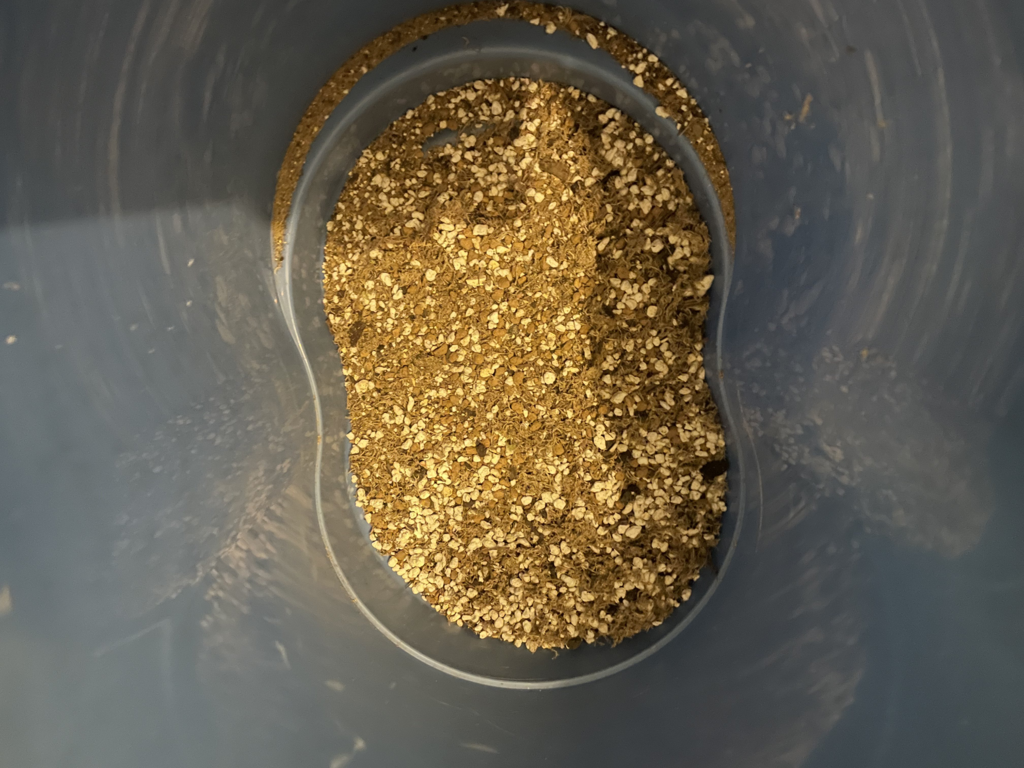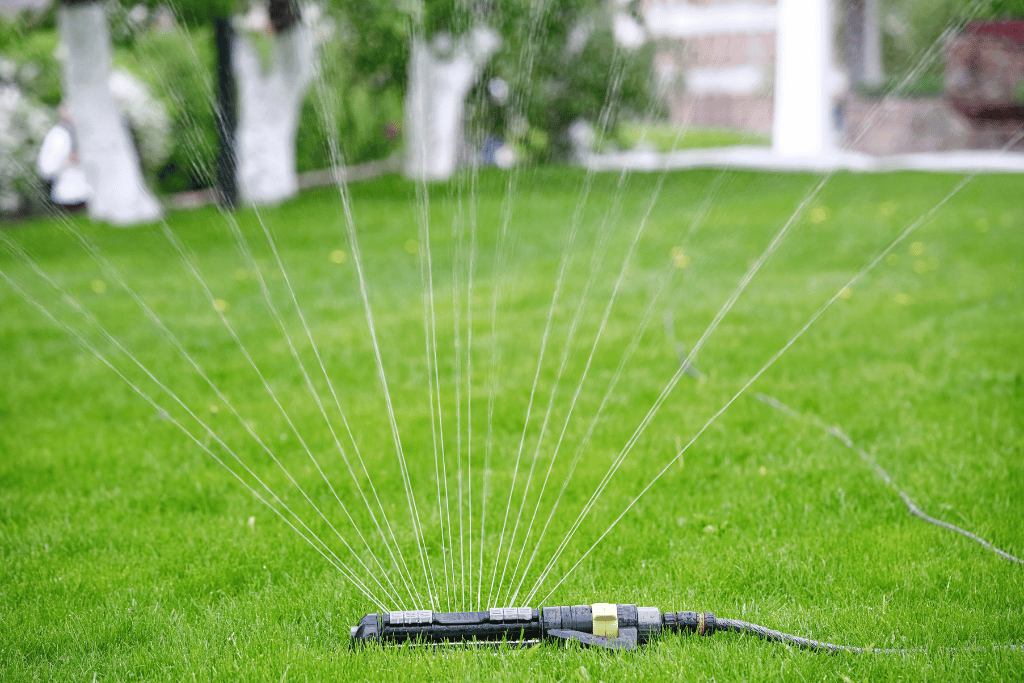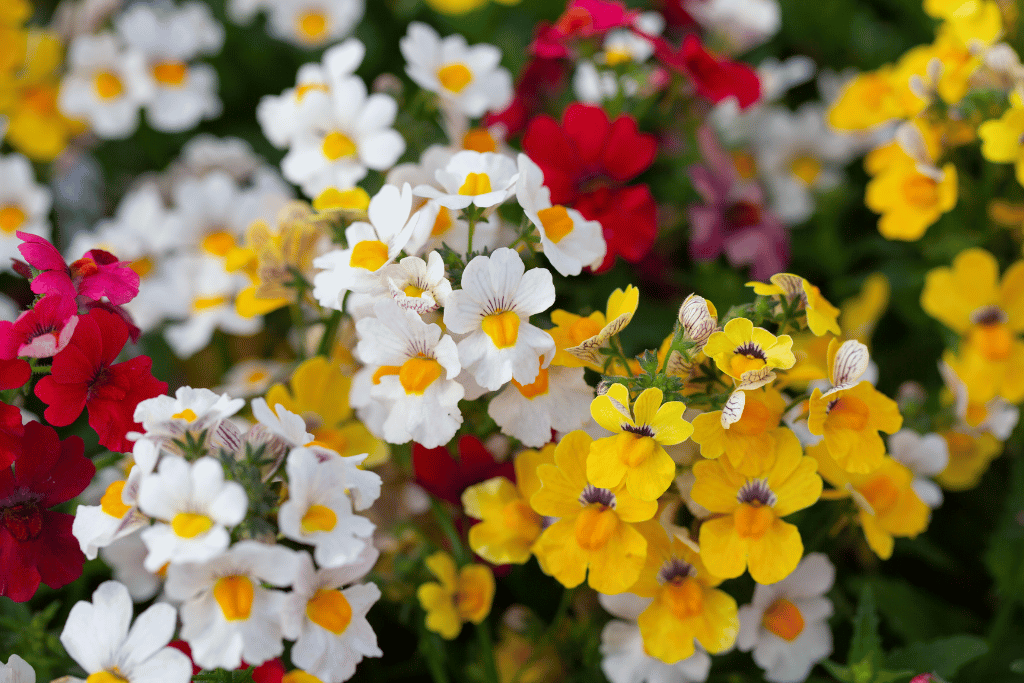Have you just been gifted a bonsai tree or bought one for yourself? If you’re unsure how to take care of a bonsai, I’ll ensure you understand the needs of your bonsai by the end of this article.
Bonsai aren’t as complicated as they seem – they just need a little knowledge and experience. It can be a steep learning curve, but you’ll get the hang of it pretty soon.

Since bonsai are simply trees kept small, they have the exact needs any tree would; however bonsai get a bit of special treatment! Here’s how to care for your bonsai:
Watering
Bonsai are going to require less water than thick, older trees. Their root mass is a lot smaller! However, they still need a good watering regime to prevent them from dying out, which can kill the tree very quickly.
This will depend on the species, though. Trees such as wisteria will require much more water compared to maples. In summer, I recommend letting wisteria sit in water due to its high demand.
A Technique for Watering Bonsai
To water my bonsai trees, I like to thoroughly water them for ten seconds, leave them for a minute and then water them again for ten seconds. This ensures the roots have received sufficient water, which is very important for the trees as they can’t handle a lack of water very well. Too dry and they’ll brown and die quite quickly.
If you need help determining when to water your tree, you should poke your finger an inch deep into the soil. If it’s still wet, you should hold off on watering until it’s a bit dryer. I recommend keeping the soil moist most of the time and only watering when the soil is beginning to dry out.
Read more: How often you should water your bonsai
Avoiding Underwatering and Overwatering
Underwatering can kill a tree very quickly. A common sign of underwatering is the bonsai leaves turning brown or yellow. This is the plant shedding leaves to try and reduce transpiration (water loss from the leaves) and conserve water.

Overwatering can also kill a bonsai tree, although it might take a bit longer. Overwatering a tree can rot its roots, which means that it won’t be able to function anymore, reducing the effectiveness of osmosis (water movement in the plant).
To reduce the risk of overwatering, you should use free-draining soils such as akadama, pumice, lava rock, grit or kanuma. They all have different properties, but akadama is a very general and useful soil for most bonsai. It can be expensive, but it comes in large quantities, which will last you for quite a while, depending on how many trees you own!
Propagation
If you enjoy getting trees and plants for free then you can propagate cuttings from your bonsai. I like to propagate cuttings in a mix of akadama, sharp sand and sphagnum moss. Sphagnum moss is very useful for seedlings and cuttings, it’s perfect for reviving sick plants, and roots are eager to grow in it. However, it can hold quite a lot of water. Sand is an excellent soil medium for cuttings and as a seed mix.

Temperature / Overwintering
Depending on the species, trees can be pretty sensitive to temperature and can get damaged by frost or by sweltering heat if you’re not careful.
Some trees can handle the frost better than others and are ‘hardy’. Examples of these kinds of trees include pines and junipers. Trees like azaleas might require more protection if the temperature goes under -5C.
If you have a tree which is not hardy, then you should put it into an unheated area, preferably where temperatures stay above freezing but not too warm. I use an unheated cold frame or my garage, which works quite well for overwintering my trees.
Before storing your trees, I recommend spraying them with a fungicide to kill any diseases that might pop up in spring that have been waiting.
Light
Light is a significant factor in keeping trees alive (or any plant). Without light, plants won’t be able to photosynthesise and die very quickly. If they can’t photosynthesise, they can’t produce the energy needed for mechanisms such as osmosis or translocation – vital processes in keeping a plant alive.
The majority of tree species love light – especially junipers. Juniper foliage becomes much more compact and tighter with the more light they get, which is desirable. However, some species prefer to be partially shaded or in the shade. This prevents them from being scorched by the heat, especially if they have tender leaves.
More light will help drive growth in the plant, so I always ensure that my trees get a sufficient amount of light, even if they burn easier than others. I aim to give my trees around six hours of light per day, which is recommended for most trees. If you can’t give them this, you could invest in grow lights and have an indoor bonsai tree.
Fertilizing
Feeding your trees is critical to keep them alive. You’ve taken a tree that usually grows freely in nature and stuck it in a small bonsai pot; you and the sun are the only things keeping it alive. It’s not going to be able to get nutrients from anywhere except you, so you need to ensure that you’re fertilizing it regularly, especially in the growing season.

Pay attention to the NPK (Nitrogen, Phosphorous, Potassium) ratios when buying fertilizer. Nitrogen helps to drive growth in the plant, phosphorous encourages the formation of fruit and flowers, and potassium ensures vital processes such as osmosis can occur.
NPK Ratios
In the growing season, I like to use fertilizers high in nitrogen to try and push out as much growth as possible. Going into autumn, I tone the nitrogen concentration down and opt for fertilisers with a higher phosphorous and potassium ratio. This prevents new, soft, tender growth from forming as the frost is likely to kill it. There’s no need to use fertilizer during the winter months, outside of the growing season.
Wiring
Bonsai trees need to be wired to keep their shape; otherwise, they’ll slowly lose it over the years. Letting them grow wild is healthy for them occasionally, but to keep them as true bonsai, they need to be wired.

Types of Wire
You can either use annealed aluminium wire or annealed copper wire. Aluminium wire is a lot easier to work with and beginner-friendly, being a lot cheaper than copper wire. Copper wire is quite stiff and mainly used for conifers.
With essentially any tree except conifers, I recommend using aluminium wire. It’s a lot easier to work with and cheaper. Even with species such as junipers or pines, which typically use copper wire, I use aluminium wire when they’re still very young.
It would be best if you didn’t leave the wire on for too long, both on cuttings or seedlings and at any stage in the life cycle of a tree. It can damage the bark, leaving it prone to disease and ugly wire scars that will stay with the tree for quite a while.
Before applying wire, I always make sure I know why I am using that wire. If I don’t, I won’t apply the wire. You should have a brief idea of how the branches or trunk will be set out before you apply the wire.
A Technique for Wiring Bonsai
When applying wire, you should apply it at a 45-degree angle between coils. This ensures that you can bend it at a good angle and it will look much neater. You should never cross wire, as this can cut the movement of water in the tree, which could cause a branch to die.
If you already have wire scars, you should wire in the scars if you need to wire a branch. This prevents any other scars from forming.
To remove the wire, you should use wire cutters. Don’t uncoil the wire with your hand, as this will damage the bark and you risk snapping the section you are wiring.
Pests and Disease
Unfortunately, pests and diseases are often overlooked when beginning a bonsai hobby. If the tree is in a humid or warm environment for quite a long time, this can promote the growth of fungus which harms the tree. This is more of a problem in winter when we are storing our trees.
Ventilation is essential in preventing disease. Unfortunately, I learnt this the hard way in the winter one time when I didn’t ventilate my garage where I kept many of my trees. This caused powdery mildew to spread throughout my trees, which was a pain as I had no fungicide on hand, and I had to run to a garden centre to get some quickly.
Most people will opt for a chemical fungicide – and I do too. I’ve heard of organic fungicides such as milk and water. However, I’ve tried this before on my roses, and this didn’t seem to work, especially in curing black spots.

Common Bonsai Disease
The most common diseases of bonsai include black spots, powdery mildew, rust, canker disease, leaf spot and chlorosis.
I wouldn’t classify chlorosis as a disease – but it still affects a lot of young plants. It’s most easily identified by the yellowing of leaves, which is caused by the reduction of chlorophyll (the green pigment) in leaves. This can be due to various things, such as a high alkaline content in the soil or, most likely, missing nutrients. I’ve found this most common on plants such as azaleas.
The water in my area is quite hard, so I like to use rainwater to water my azaleas. If I don’t have access to rainwater, though, I mix a teaspoon of white vinegar into my watering can once every month, which helps break up the soil’s alkaline content. It would be best if you didn’t do this very often.
Common Bonsai Pests
Pests can also be a problem for young plants. If you have stressed the young plants out through underwatering, overwatering, repotting or lack of sunlight, this can attract pests to the plant very quickly. Some common pests include aphids, vine weevils and spider mites. Aphids are identifiable by the sticky and shiny excretion they produce called ‘honeydew’. They also like to bunch up on leaves, where you’ll be horrified to find them!
Regarding pests, I don’t use chemical pesticides. I’ve found that a mixture of dish soap and water is good enough to eliminate most pests or neem oil. When using chemical pesticides, you should note that they also kill helpful insects in the garden.
Neem oil is especially effective in getting rid of pests, and it can be found for a low price on most websites.
Repotting
One of the most crucial stages in a bonsai is repotting. Without it, trees would suffer quite severely due to the small pots they are kept in.
You should only repot trees for a specific reason, such as lack of water permeability in the soil or if the tree has become highly root bound.
When a tree is root bound, it means that the roots have encircled the pot many times, and it’s not healthy for the tree.
You should only be repotting trees at the right time of year – typically spring for most trees. However, some conifers prefer to be repotted earlier in the year. Some species that can be done in spring include; maples, beech, hawthorn, azaleas and Chinese elm. There are many more; these are just a few named examples.
A Technique for Repotting Bonsai
To repot your tree, you should loosen the tree out of the pot slightly. You can do this by pushing on the bottom of the pot if it’s potted in a plastic pot. If it’s not, you can work the edges of the pot with something like a chopstick to loosen the roots. Once loosened, you should be able to push it out, or it should come out fairly quickly if you tip it at an angle.
If your tree still isn’t coming out, you could try something like a knife or a sickle. These are more likely to damage the tree. However, if it’s incredibly rootbound, then this might be your only option.
After this, I will typically loosen the roots by taking some soil off the edges and bottom of the root mass. Depending on the size of the tree, you should adjust how much you take off. On younger trees, I will take quite a bit less off compared to older trees.
Ideally, it would be best to prepare somewhere to repot your tree. I like to use a plant bench. However, you can do it anywhere you’re prepared to clean. Repotting can get very messy!
Soil Mix
I prepare my soil mixes before spring, ensuring it’s ready for all my trees to be repotted. I like to use mostly akadama with some pumice mixed in for most of my trees. Many of my younger plants are azaleas, so my acidic soil mix is 40/40/20 kanuma, sphagnum moss and akadama.
After preparing somewhere to repot the tree, you should also prepare the new pot that the tree is going in. Remember – if it’s a younger tree that you’re still developing, it’ll do much better in an ordinary pot than a bonsai pot. Bonsai pots are meant for established and developed trees to show them off, while younger material should be trained first and not restricted in growth.

To prepare the pot, you should make sure that it’s clean. After this, you should add mesh to the drainage holes, tying them in place with some wire. This prevents any loose soil from falling out, but this can’t be helped on some bigger pots, and it may not be cost-effective to use this method.
Depending on the size of the tree, I will also use tie-in wires which will help to keep the root mass in place while it grows into the soil, preventing it from falling out of the pot if, for example, it got knocked over by the wind.
The wire holding the mesh in can be a relatively small gauge, but the tie-in wires should be a higher gauge to ensure that it secures the tree.

After this, you should put a mound of soil in the middle of the pot and wiggle the tree onto the mound. This will ensure the soil gets into the root ball, ensuring there are no air pockets underneath the trunk. I then fill up the tree with more soil.
You must firm the soil into place with something like a chopstick, preventing any air pockets. You should be thorough and ensure that no more soil can be pushed down. Otherwise, this could be bad for the tree down the line.
Aftercare
After the tree is fully repotted, I like to water it thoroughly. In regards to aftercare, I’ll place it in partial shade for a few weeks and ensure it’s not being overwatered or underwatered, which is crucial for a newly repotted tree to survive. It would help if you also watched out for any late spring frosts, which can damage both the roots and the buds.
Frequently Asked Questions (FAQ)
What’s the easiest species of bonsai tree to take care of?
If you’re looking for a low-maintenance, hardy tree to get into the hobby with, I would recommend a ficus. Pretty much every beginner starts off with a ficus or a Chinese elm. They can be kept indoors and can tolerate quite a lot, so they’re good to learn some techniques on. Compared to other trees, they are usually quite a bit cheaper as well due to the large supply, particularly from China
What’s the most complex species of bonsai tree to take care of?
So you like a challenge? When I’m asked this question, I immediately think of junipers. I’m still not entirely sure on how to take care of a juniper bonsai tree, but I’m making progress! However, a lot of people find junipers relatively easy. I believe that this question entirely depends on you as an individual and what you are most used to working on, and what you find easy. I find conifers to be quite tricky, so I tend to stay away from them. However, you might think the opposite! It’s all up to you.
What fertilizer should I use for bonsai?
There are a lot of top-notch brands you can use, such as Naruko or Biogold. These are a bit more on the expensive side as they’re fancy Japanese fertilizers; however, ordinary garden centre fertilisers will do the trick as well. Just make sure to look at the NPK ratios before you buy, as this will help you make sure that your tree is getting a balanced mix.
How long does it take to get a thick bonsai trunk?
If you’re looking for a particularly thick trunk on your bonsai, it depends on what material you’re starting out with. If you’re growing a bonsai from seed, then this can take around 10-15 years. This will also depend if you’re growing it in pots or in the ground. Growing bonsai in the ground allows you to get a thicker trunk a lot quicker compared to growing bonsai in pots. Some species are pretty slow-growing, though, so they can take longer than 15 years. If you’re looking for a thick trunk quickly, I would recommend starting off with nursery material and planting it in the ground first to let it get established



